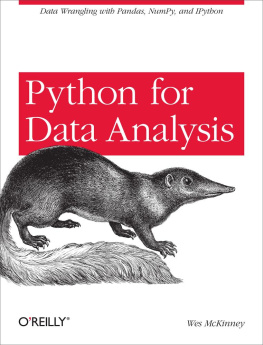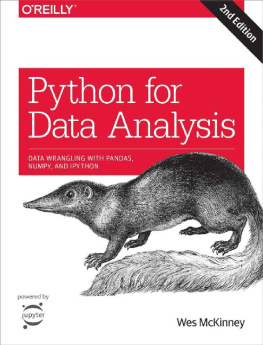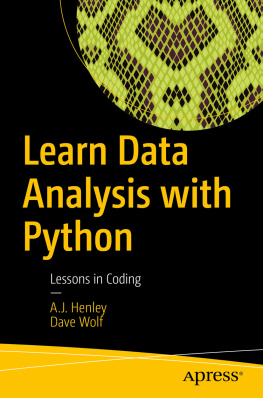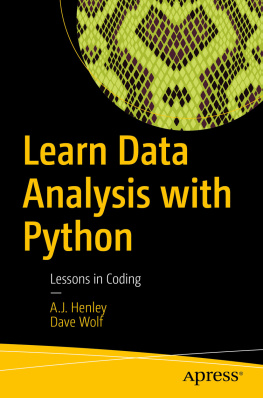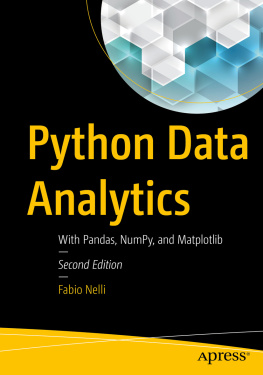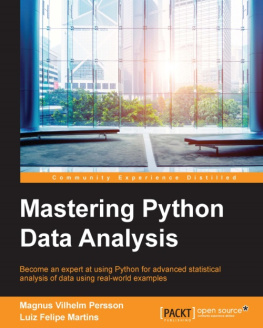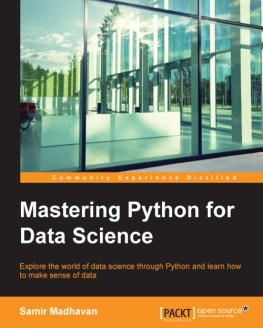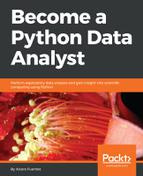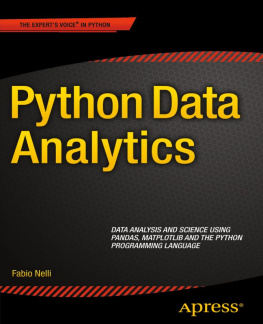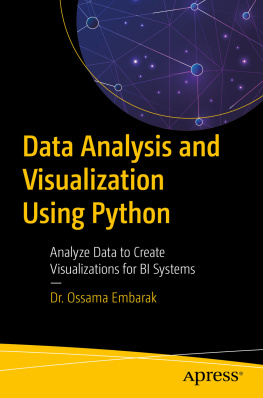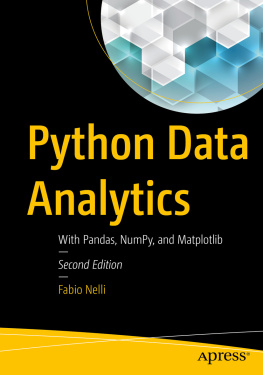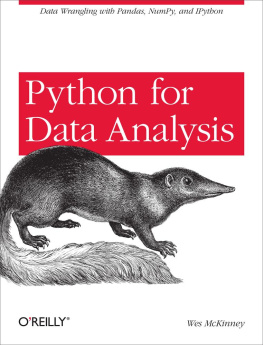Wes McKinney - Python for Data Analysis
Here you can read online Wes McKinney - Python for Data Analysis full text of the book (entire story) in english for free. Download pdf and epub, get meaning, cover and reviews about this ebook. year: 2012, publisher: OReilly Media, genre: Computer. Description of the work, (preface) as well as reviews are available. Best literature library LitArk.com created for fans of good reading and offers a wide selection of genres:
Romance novel
Science fiction
Adventure
Detective
Science
History
Home and family
Prose
Art
Politics
Computer
Non-fiction
Religion
Business
Children
Humor
Choose a favorite category and find really read worthwhile books. Enjoy immersion in the world of imagination, feel the emotions of the characters or learn something new for yourself, make an fascinating discovery.
- Book:Python for Data Analysis
- Author:
- Publisher:OReilly Media
- Genre:
- Year:2012
- Rating:4 / 5
- Favourites:Add to favourites
- Your mark:
Python for Data Analysis: summary, description and annotation
We offer to read an annotation, description, summary or preface (depends on what the author of the book "Python for Data Analysis" wrote himself). If you haven't found the necessary information about the book — write in the comments, we will try to find it.
Finding great data analysts is difficult. Despite the explosive growth of data in industries ranging from manufacturing and retail to high technology, finance, and healthcare, learning and accessing data analysis tools has remained a challenge. This pragmatic guide will help train you in one of the most important tools in the fieldPython.
Filled with practical case studies, Python for Data Analysis demonstrates the nuts and bolts of manipulating, processing, cleaning, and crunching data with Python. It also serves as a modern introduction to scientific computing in Python for data-intensive applications. Learn about the growing field of data analysis from an expert in the community.
Wes McKinney: author's other books
Who wrote Python for Data Analysis? Find out the surname, the name of the author of the book and a list of all author's works by series.

